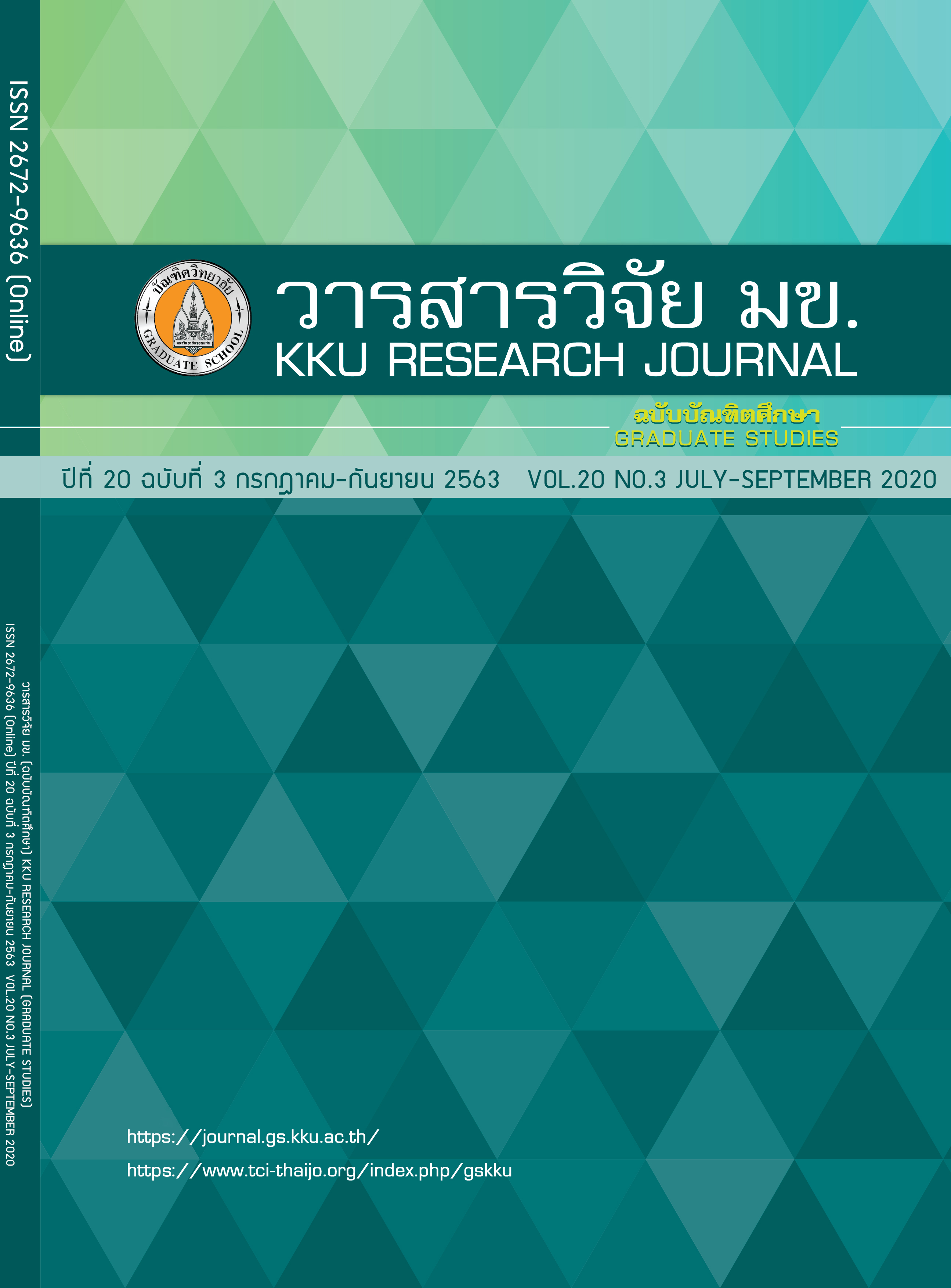Data Envelopment Analysis-Based Efficiency Study for Fire Safety Management in Thailand
Keywords:
Efficiency, Fire safety management, Data envelopment analysisAbstract
This research aims to analyze an efficiency of fire safety management in 9 industrial groups in Thailand by using Data Envelopment Analysis (DEA) technique. Initially, we collect and analyze input data for two criteria (i.e., capital investment and employee numbers) and output data for three criteria (i.e., number of trained staffs in fire training, damage cost, and number of injured/killed) following three consecutive years from 2013 – 2015, which are reported in the accident investigation report from the Department of Industrial Works. Our analyses show that industrial group 1) Textile industry and fibers from bleaching, and group 4) Chemicals business group, petrochemical, and hazardous substance are operating with good efficiency in fire management during the past 3 consecutive years; whereas 3 industrial groups are found lacking of proper efficiency, in which future improvements are required.
References
Department of Public Disaster Prevention and Mitigation [Internet]. Bangkok; 2019 [cited 1 April 2019]. Available from: http://info.dla.go.th/
Goufoc D, Chokkid AP, Yengoa MV. Agent-Based Modelling and Simulation for evacuation of people from a building in case of fire. Procedia Computer Science 2018;130:10-17.
Safety Technology Bureau Division of the Industrial factory. Operation manual according to the announcement of the Ministry of Industry on the prevention and extinguishing of fire in the factory in 2009 [Internet]. Bangkok;2019 [cited 2 March 2019]. Available from: http://www. diw.go.th/hawk/news/
Safety Technology Promotion Division, Department of Industrial Works. Accident Statistics, 2007-2017 [Internet]. Bangkok;2019 [cited 1 March 2019]. Available from: http://oaep.diw.go.th/safety/
Nisakorn S. Assessment of supplier performance with DEA techniques, case studies of dairy companies. Engineering research and development journal 2014: 25(3)
Boopawarn P. Psychiatric hospital performance by DEA method. Journal of Mental Health of Thailand 2010: 18(3)
Prasopchai P. Variable selection methods for organizational efficiency with the DEA method. Business Administration Journal 2008: 31(118)
Sawarin P. Evaluation of the efficiency of the rubber fund cooperative in Songkhla province by using DEA. KKU Res. J. 2013: 18 (5)
Wattana C, Niroot W, Kitti W, Kasin R. Assessment of fire management efficiency in the northeastern provinces with Data Envelopment Analysis technique. In Chawarit T, editor. Ubon Ratchathani University Conference 12. July 2018; Theparatsiripapha Ubon Ratchathani University; 2018.p. 272 -278
Suriya S, Thodsapon S, Natipong C, Kanchanawadee L, Kasin R. The study of the borrowing efficiency of commercial banks in the Northeastern Province by using Data Envelopment Analysis. In Repeepan P, Kurachet P, editor. Industrial Engineering Network Conference 2018 (IE Network 2018); 23-26 July 2018; Sunee Grand and Conven Hotel Center Center. Ubon Ratchathani Province ; 2018.p. 358-362
Russo F, Rindone C. Data envelopment analysis for planning emergency. WIT Transactions on Ecology and the Environment 2012 ;155:1091-1101.
Ransikarbum K, Kim N. Data envelopment analysis-based multi-criteria decision making for part orientation selection in fused deposition modeling. In IEEE. 4th International Conference on Industrial Engineering and Applications (ICIEA) 2017 p. 81-85
Abbott M, Doucouliagos C. The efficiency of Australian universities: a data envelopment analysis. Economics of Education review 2003 ;22(1):89-97.
Adler N, Friedman L, Sinuany-Stern Z. Review of ranking methods in the data envelopment analysis context. European journal of operational research. 2002 ;140(2):249-265.
Charnes A, Cooper WW, Lewin AY, Seiford LM, editors. Data envelopment analysis: Theory, methodology, and applications. Springer Science & Business Media; 2013.
Coelli T. A guide to DEAP version 2.1: a data envelopment analysis (computer) program. Centre for Efficiency and Productivity Analysis, University of New England, Australia. 1996.
Cooper WW, Seiford LM, Zhu J. Data envelopment analysis. Handbook on data envelopment analysis. International Series in Operations Research & Management Science. 2004;71: 1-39.
Mardani A, Zavadskas EK, Streimikiene D, Jusoh A, Khoshnoudi M. A comprehensive review of data envelopment analysis (DEA) approach in energy efficiency. Renewable and Sustainable Energy Reviews. 2017 Apr 1;70:1298-1322.
Niroot W, Wattana J, Kitti W, Kasin R. Research direction and application of decision-making techniques using Data Envelopment Analysis methods in Thailand. In Repeepan P, Kurachet P, editor. Industrial Engineering Network Conference 2018 (IE Network 2018); 23-26 July 2018; Sunee Grand and Conven Hotel Center Center. Ubon Ratchathani Province ; 2018.p. 293-299
Industrial accident database system, Department of Industrial Works, 2013-2015 [Internet]. Bangkok;2019 [cited 1 March 2019]. Available from: http://warroom.diw.go.th/safety/
Thai. Law. Ministerial regulations prescribing standards for the management and operation of safety, occupational health and working environment regarding fire prevention and suppression. Bangkok: Ministry of Laboure 2012.
LINDO program [Internet]. Chicago; 2019 [cited 1 January 2019]. Available from: https://www.lindo.com/index.php/ls-downloads.
Kasin R. Course documentation Multi-Criteria Decision Making, Faculty of Engineering Department of Industrial Engineering Ubon Ratchathani University; 2017.
Charnes A, Cooper WW, Rhodes E. Evaluating program and managerial efficiency: an application of data envelopment analysis to program follow through. Management science. 1981;(6): 668-697.
Banker RD, Charnes A, Cooper WW. Some models for estimating technical and scale inefficiencies in data envelopment analysis. Management science. 1984;30(9): 1078-1092.



